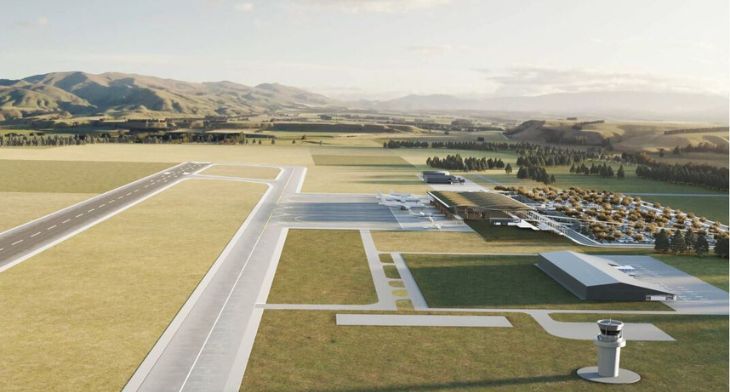


Christchurch Airport has released a report outlining the latest updates on the exploration of a potential airport in the Central Otago region near Tarras.
The new regional airport would ease well-known air capacity constraints in the region, with the report revealing the preferred runway alignment and length, information on the environment around the site and it contains analysis on the impact an airport could have on the land transport network. It also underlines the implications of not building additional air capacity.
Christchurch Airport’s CEO, Justin Watson, said the project is worth exploring. “Our team has been working with experts to understand what the region might need in 20, 30 or 40 years and how a new Central Otago Airport could support the social and economic wellbeing of the region,” he said.
“We know people in Central Otago are passionate about their place in the world and what happens to it. Its economy depends on the efficient movement of people and products, and while we’re not making decisions yet, we are making sure we fully understand the impact of the options both now and for future generations.”
The airport’s Chief Strategy and Stakeholder Officer, Michael Singleton added that demand for air connectivity to and from the region is likely to far exceed the region’s current capacity over the next 30 years.
“This,” he said, “could result in the region spilling more passengers than it serves by 2040. Increasing cpaacity at existing infrastructure will only move the problem out a few years. This is likely to have a far greater impact on residnets, as visitors are more likely to book earlier and pay higher fares,” he said.
He warned that if additional capacity is not available, there could be between two and three people vying for every available seat to and from the region by 2050.
The airport’s research shows that a runway aligned to the Lindis Valley and Lake Dunstand stood out for its safety, operational efficiency and having a lesser noise impact on the communities in Central Otago. “The alignment also provides greater flexibility for aircraft types, which is particularly important to enabling the next generation of low emissions,” Singleton added.
Acknowleding that runway length is a key enabler for regional growth, connectivity, resilience and prosperity, he noted that considerable time had been spent on understanding the range of runway lengths realistically achievable on the site.
“Based on the information we’ve seen so far, a runway between 2,200 and 2,600 metres is likely to be feasible on the site and would provide Central Otago with infrastructure fit for a low carbon future.”





